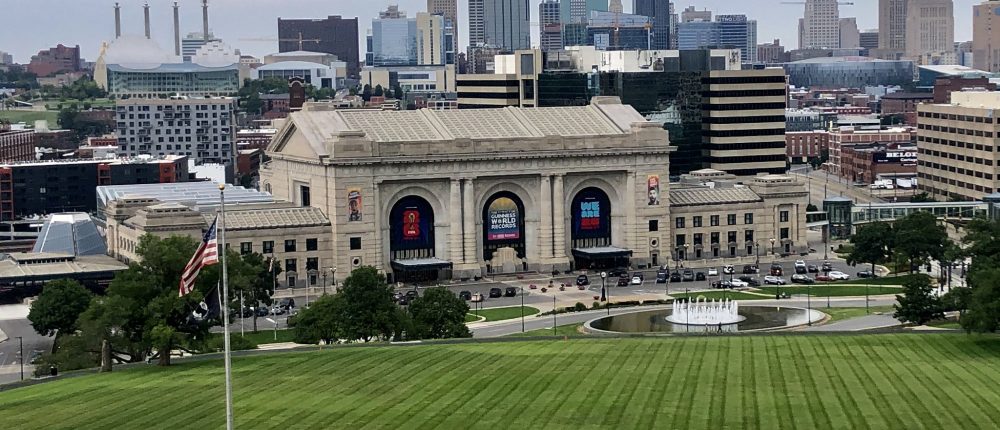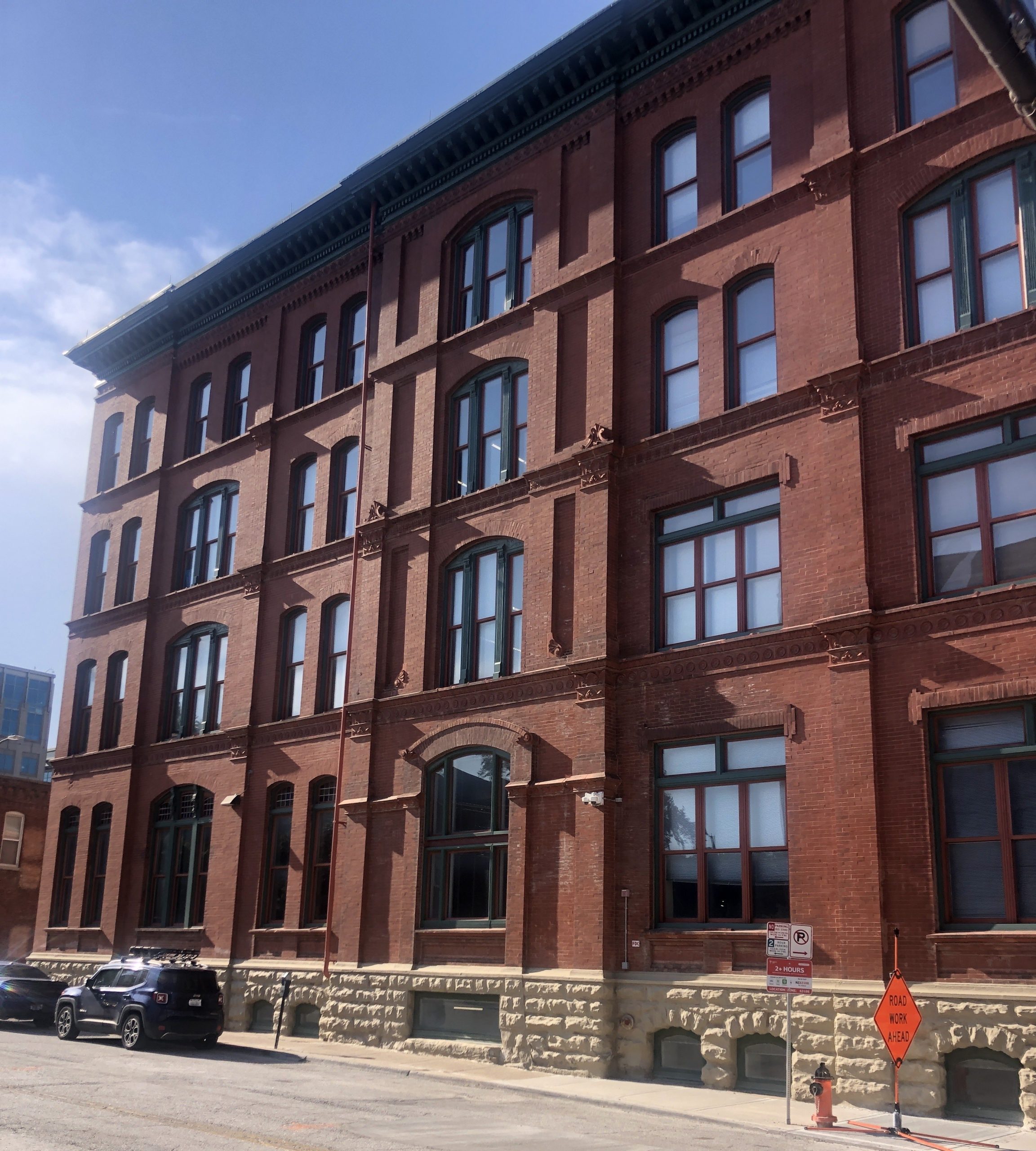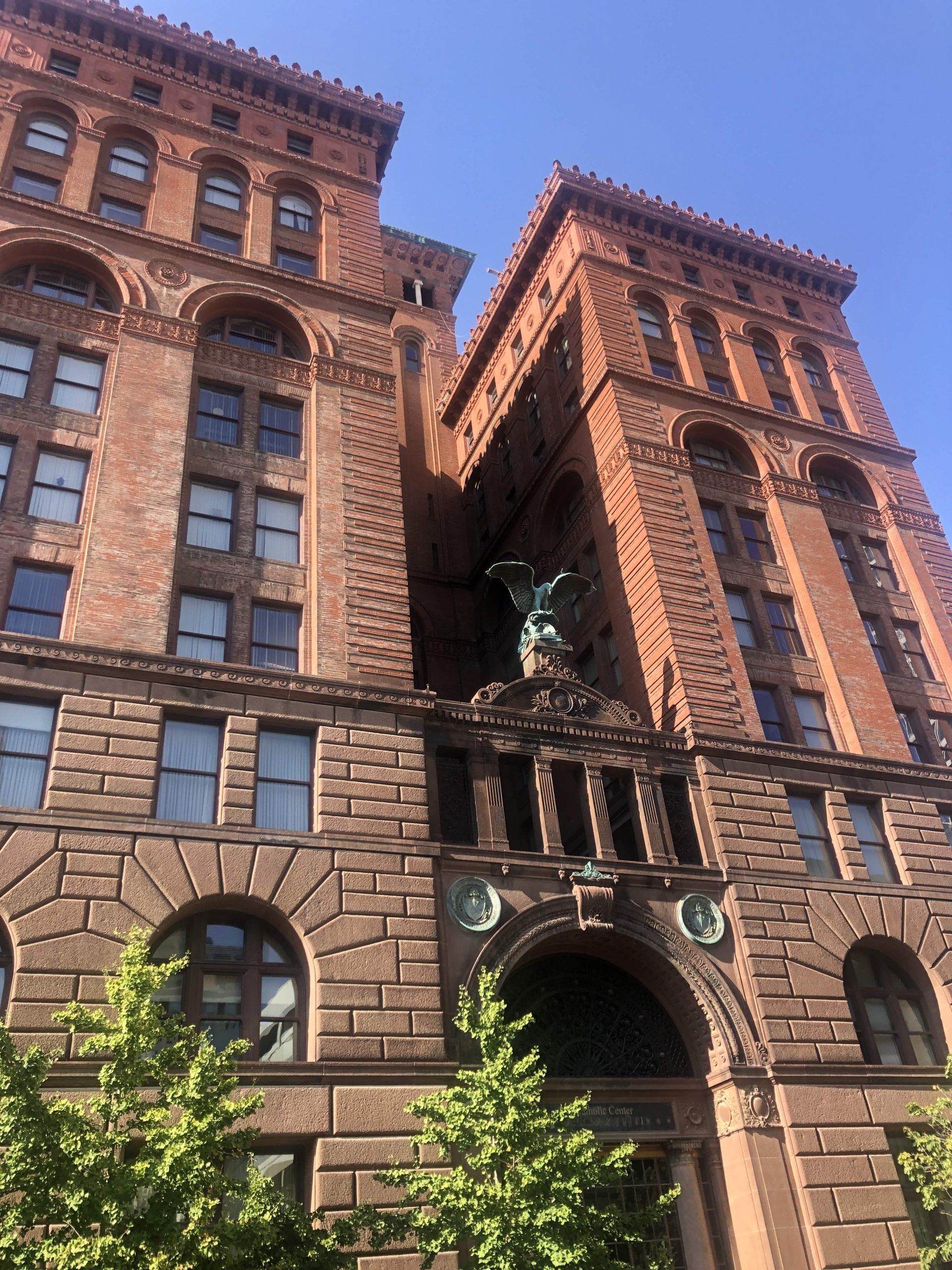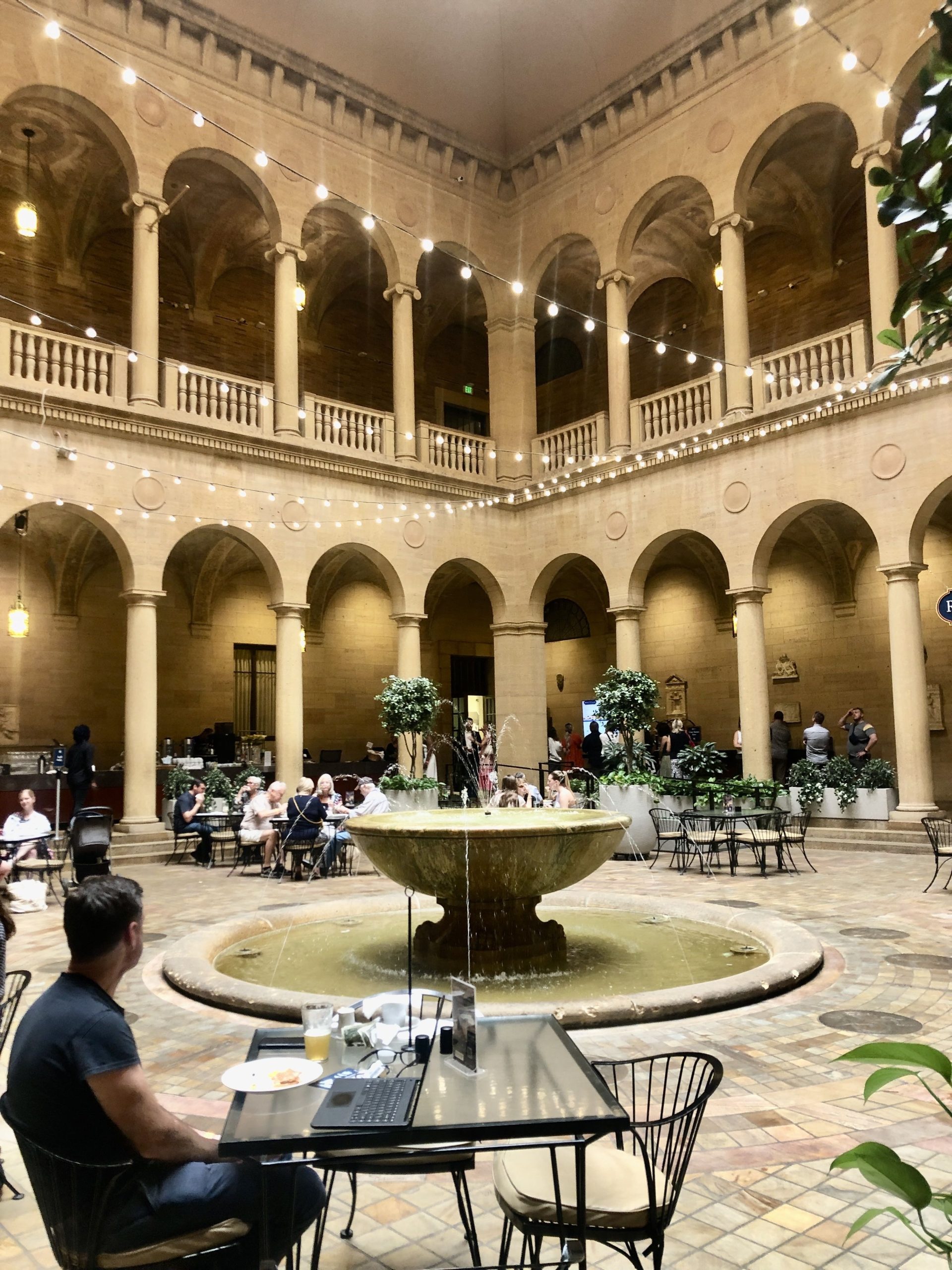
Kansas City: Wandering the Middle Ground
Kansas City, Missouri, had never been on my bucket list. But because my community engagement work is national, I travel to major cities and small towns across the U.S., each with its own vibe, story, and character. What works in one city may not work in another. It’s a great way to practice urban planning, free from being tethered solely to theory, policy, and precedent, letting my body do the wandering, like a European tourist here or an American abroad. Experiencing a city this way allows me to feel its geography, trace its cultural and economic history, read the social fabric through its urban design and landscape.
Recently, I was in Kansas City working on the Reconnecting the Westside project, which focuses on restoring connections within the Westside neighborhood and addressing the disruptions caused by the construction of I-35 and I-670.
I had visited Kansas City previously for quick trips, but caught only bits and pieces in the process. This time I stayed for a few days, which allowed me to study the project area and really sink into the city. My journeys usually begin with a LinkedIn search to learn if I might know any locals. Urban planners, after all, are like nomads, moving from place to place. To my surprise, I found that many colleagues from Los Angeles had relocated to or retired in Kansas City. It made me wonder: What pushes people out of L.A., and what draws them here?
I booked a hotel at Main and 20th Streets for its proximity to the train station and car rental. Online, the area looked industrial, but it turned out to be perfect: on the streetcar line, within walking distance of the Westside study area, in the middle of the First Fridays art walk, and just a block from Union Station. I’d landed in the heart of an emerging cultural and entertainment corridor.

A City on Bluffs and Rolling Hills
Perched above the confluence of the Missouri and Kansas Rivers, downtown Kansas City stretches along a linear north-south spine that’s easy to navigate. From its bluffs and summits, you can take in sweeping views of the river bottoms, where the city first took root as a bustling junction. Here, cattle drives from Texas met the railroads bound for Chicago’s stockyards, an exchange that fueled a robust and enduring economy.
The downtown and cultural heart runs from the historic River Market at the north end to Country Club Plaza at the south, with a grand urban design intervention in the middle. Each end has a distinct character, and both are accessible on foot or by streetcar (the southern extension of which is opening this October). Despite the web of freeways and numerous parking lots, much of the city’s historic architecture remains intact. In fact, the freeways keep cars away from many downtown streets—unlike Los Angeles, where streets often double as freeways. But in Kansas City, everything really is only 15 minutes away.
The River Market
The River Market’s Victorian commercial buildings mark where the city began to take shape and remain home to the historic City Market, a lively hub connecting past and present. Here, we had lunch at Pigwich, a perfect pause in a district that still hums with commerce.
The Garment District
Despite the heat, I spent a late afternoon wandering the historic Garment District, with its 19th century industrial architecture. These solidly built four- to six-story structures once anchored a thriving industry that clothed 25% of Americans. Functional and efficient in design, the buildings were crafted with care: corner entryways angled toward intersections, brick facades glowing warmly in the fading light, ornate details giving each building a distinctive personality.
Quiet streets and bluff-top views added to the cocoon-like sense of comfort. Every building told its own story. I ended my walk at the vintage Savoy Grill bar, enjoying a Caesar salad with white anchovies while Harold Lloyd’s Safety Last flickered on the screen, his daring skyscraper climb a perfect match for the district’s rich sense of history.
Baltimore Street and Jazz Age Glamour
Downtown’s Baltimore Street is a narrow corridor lined with 1920s Tudor- and Gothic-style hotels, a throwback to the Jazz Age. Some of their lobbies and clubs remain remarkably intact, preserving the era’s elegance. It’s easy to imagine Chicago architects winning commissions here and big-city travelers, en route to either coast, stopping by to hear jazz.
Downtown: An Affordable Disneyland
Downtown Kansas City feels like an affordable Disneyland, where families arrive with children in tow, creating a wholesome, welcoming atmosphere. In many cities, downtown’s hustle and bustle, paired with traffic, crime, grime, homelessness, and a lack of attractions and amenities for young families, pushes them away. Here, the social vibe feels balanced. And children bring optimism to a space. K.C. is not as uptight as East Coast cities, nor as laid-back as the West Coast ones. It’s neither distinctly southern nor northern, and you don’t have to “become a Texan” or a “Minnesotan” to fit in. Kansas City feels like common ground, its own organically grown middle.
 Union Station & Civic Grandeur
Union Station & Civic Grandeur
Union Station is Kansas City’s linchpin, connecting the city’s north and south. Its massive scale and constant activity make it a destination in its own right, reminiscent of Milan’s Central Station. Across the street, the National WWI Museum and Memorial—part of the City Beautiful movement—creates, together with the station, a grand civic space with commanding views.
Country Club Plaza
My visit to Country Club Plaza, an outdoor shopping center opened in 1923, was brief, but I instantly fell in love with its Spanish Baroque towers, gold-clad roofs, colorful facades, and ornate fountains. In my interactive model cities, I often recreate these elements, perhaps subconsciously. This style flourished in Los Angeles during the 1920s and ’30s but today survives only in scattered buildings. UCLA’s Westwood Village was originally designed in the same style. Yet unlike the K.C., where the architectural integrity remains intact, Westwood has lost much of its original character. Who knew I would find a bit of L.A. architectural history in Kansas City?
The Beaux-Arts Nelson-Atkins Museum of Art, opened in 1933, exudes timeless grandeur. It recalls European civic buildings that embody urban aspirations and appeal to the senses. Perched on a hill like Vienna’s Gloriette, it commands stunning views. Inside, black marble columns, white marble walls, and ornate insignia in the Neoclassical lobby evoke a royal palace. My favorite spot is Rozzelle Court Restaurant, modeled after a 15th century Italian courtyard, where sunlight filters into a fountain-centered plaza framed by graceful colonnades.
The Power of Play: The National Museum of Toys and Miniatures
When I was 4 years old, I wanted a dollhouse. But in those days, boys didn’t play with dolls. Instead, my grandmother gave me a shoebox filled with discarded household objects. I built a tiny living room inside, then expanded my vision into an entire city laid out on the floor: miniature streets and buildings inspired by booming Los Angeles. Those early dioramas were my first lessons in understanding cities.
Visiting the National Museum of Toys and Miniatures reminded me how play humanizes urban planning and how dioramas help people grasp spatial relationships. The museum’s miniatures are meticulous replicas; my models, by contrast, are artistic interpretations, more like toys that invite interaction. Playing with buildings, landscapes, street grids, and objects allows people to express ideas they might never put into words. It turns planning into a conversation that is hands-on, imaginative, and deeply human.
The Kansas City Streetcar
The city’s streetcar traces its cultural branch, linking entertainment, dining, and historic districts. Clean, safe, and (most important) free to ride, it thrives even as transit ridership declines elsewhere across the nation. I noticed more riders in the evenings and weekends—people who didn’t need to get somewhere but appeared to just enjoy the ride itself. The streetcar is an attraction as much as it is a mode of transportation.
Character and Loss
I used to live in and wander the streets of downtown L.A. with so much optimism, but much of the city’s urban, social, and cultural fabric has been erased or transformed. The physical and mental landmarks that once connected me to the city are critical; they’re how I find patterns and narratives. Hustle is in L.A.’s DNA, but like a game of craps: either you’re in or you’re out. That sense of loss in L.A. shapes how I see and experience Kansas City’s preserved character. No wonder so many of my colleagues have chosen to relocate here.
Featured image: Union Station, Kansas City. All photos by the author unless otherwise noted.










